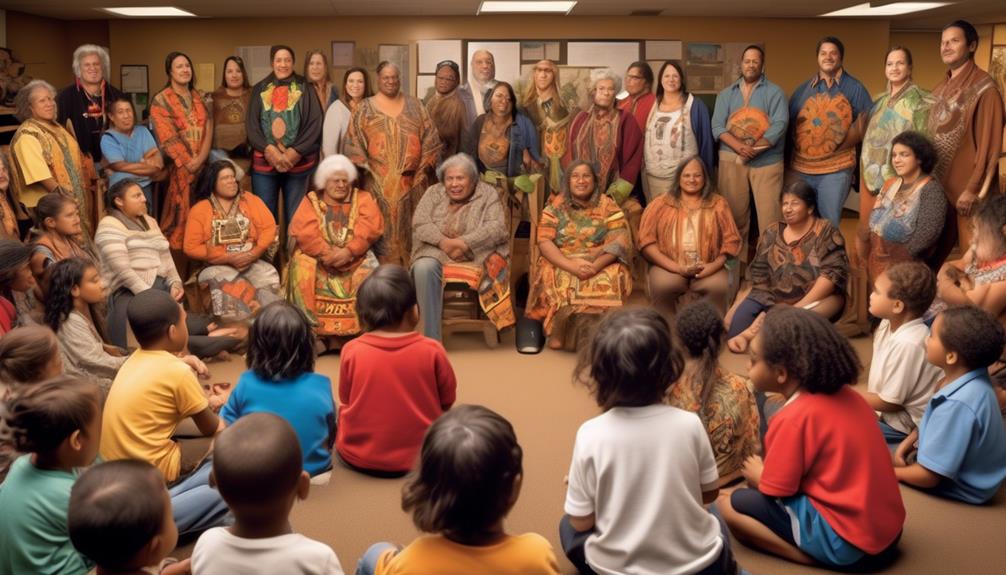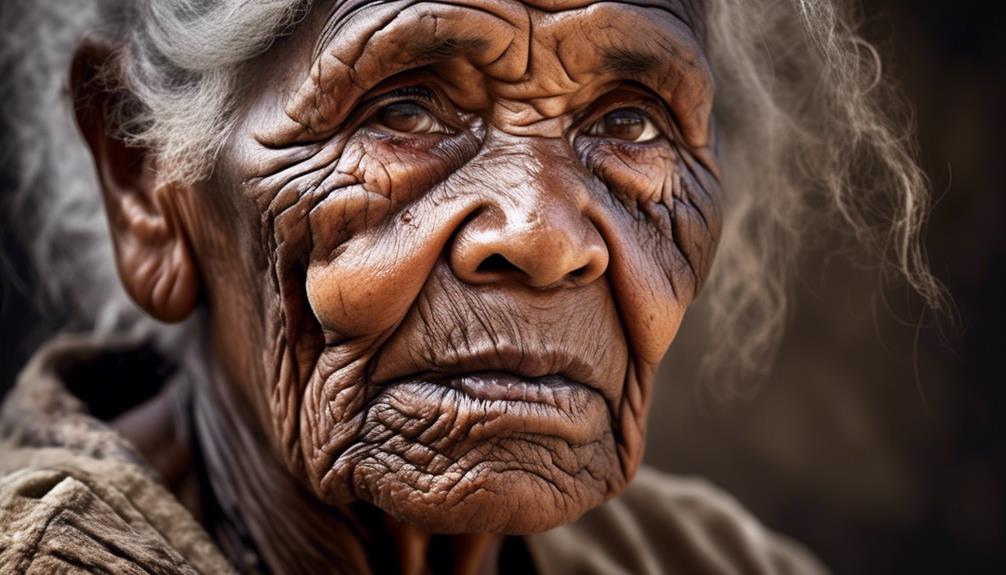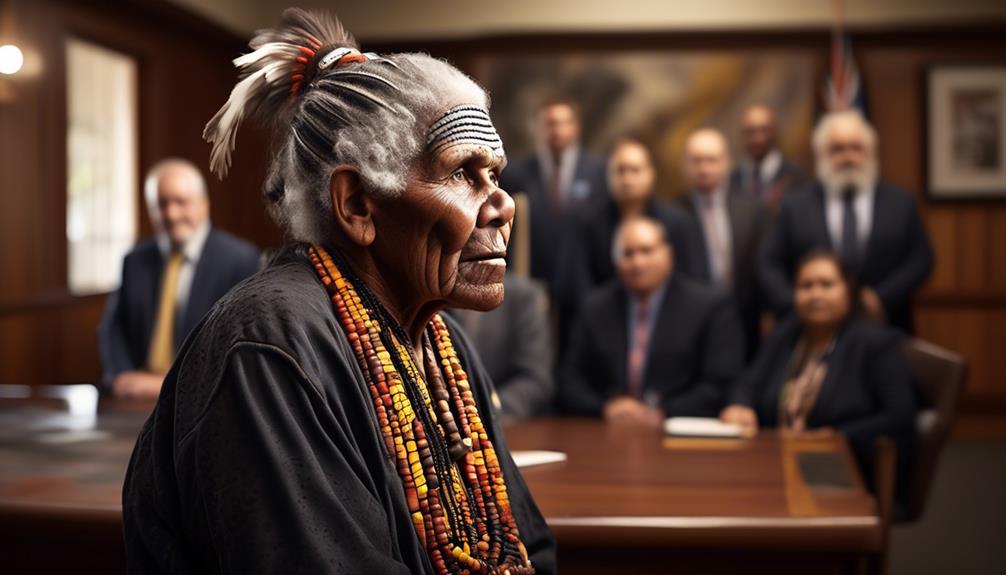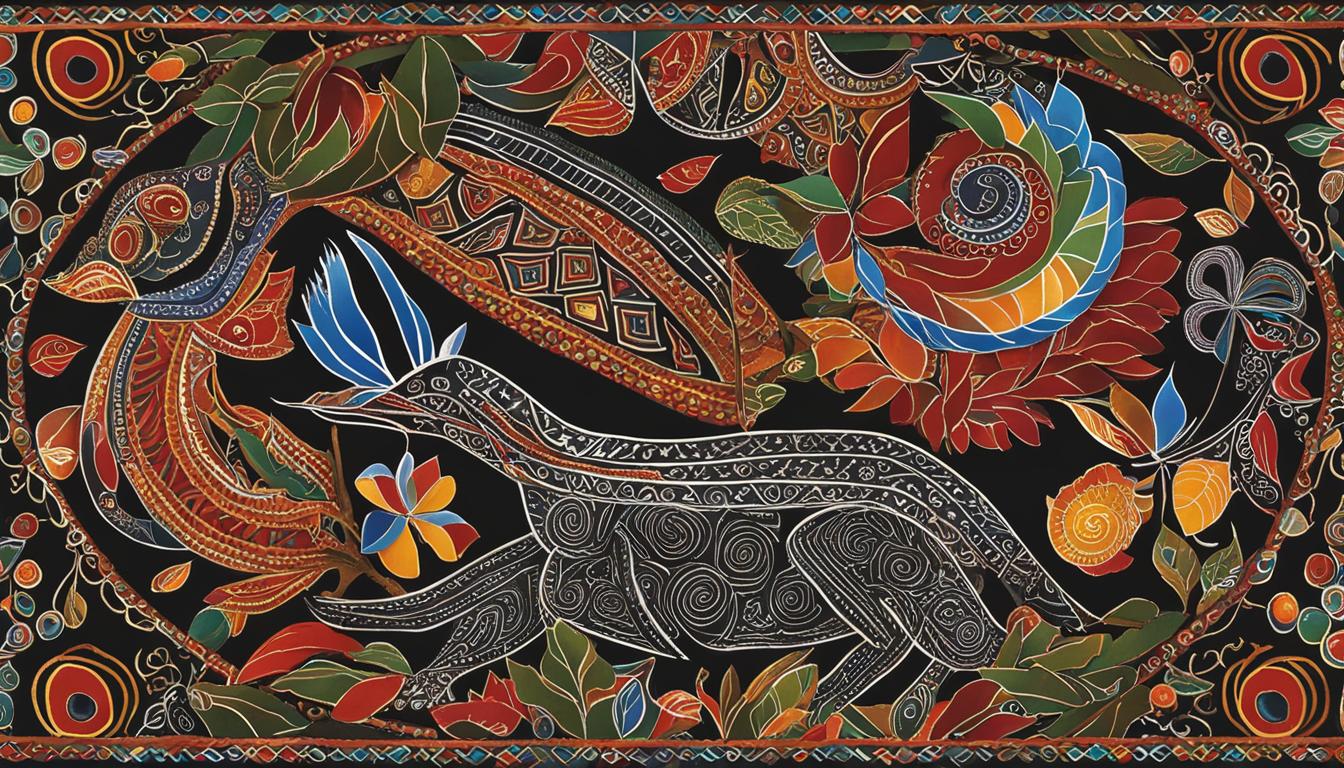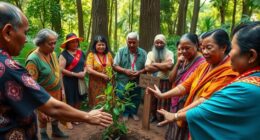Reflecting on the condition of Indigenous languages in Australia, it is quite striking to realize that from the original 250 individual languages that existed, merely about 120 remain active today, with a significant number facing critical endangerment.
In response to this pressing issue, a comprehensive approach has been developed to address the urgent need for language preservation. Through the establishment of regional committees and language centers, this initiative aims to not only revitalize and preserve Aboriginal and Torres Strait Islander languages but also to foster a deeper understanding of the connection between language, culture, and identity.
As we delve into the multifaceted strategies and collaborative efforts employed in this comprehensive program, it becomes evident that the preservation of Indigenous languages is not only a linguistic endeavor but also a crucial element in the broader context of cultural and social sustainability.
Key Takeaways
- Indigenous languages in Australia have experienced significant decline due to colonization and adverse government policies, with only around 120 languages still in use out of the original 250.
- Regional committees and language centers play a crucial role in language preservation by facilitating collaboration, understanding community needs, advocating for recognition, and supporting effective preservation strategies.
- Language centers serve as hubs for revitalization efforts by offering language programs, cultural activities, and resources that reflect the unique cultural practices and heritage of Aboriginal and Torres Strait Islander languages.
- Collaborative approaches, such as co-designing initiatives with First Nations communities and involving community members in shaping language preservation initiatives, are key to successful language revitalization.
Historical Context of Language Preservation
In the wake of colonization and past adverse government policies, First Nations peoples of Australia have faced ongoing language attrition, dislocation from their country, and punishment for speaking their languages, contributing to the loss of their linguistic heritage.
The historical context of language preservation for Indigenous languages, particularly those of Aboriginal and Torres Strait Islander peoples, is crucial in understanding the current efforts towards language revitalization and cultural heritage preservation.
The impact of colonization, government policies, and language ecology has significantly affected the number of Indigenous languages, which has fallen from approximately 250-300 in 1788 to around 114 in the early 2000s. This decline underscores the urgent need for language preservation initiatives.
Understanding this historical context emphasizes the importance of regional committees and language centers in supporting the revitalization of Aboriginal and Torres Strait Islander languages. These initiatives not only provide a foundation for language preservation but also serve as vital hubs for cultural transmission and the promotion of linguistic diversity.
Role of Regional Committees in Language Preservation
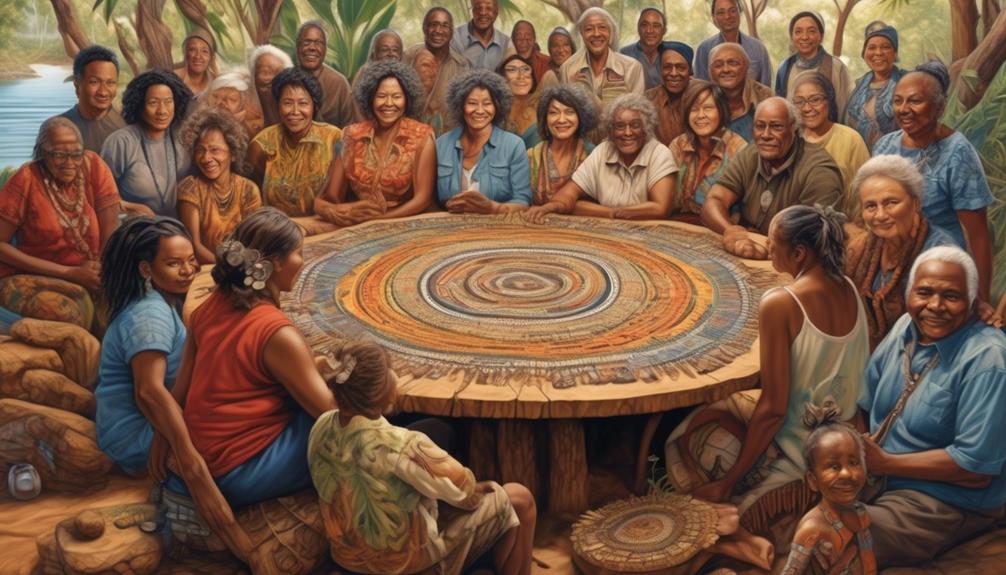
Playing a crucial role in coordinating and supporting language preservation efforts within their respective areas, regional committees actively engage with various stakeholders to develop comprehensive strategies. This engagement is crucial for the successful preservation of Indigenous languages and the promotion of First Nations culture.
Here are some key roles and responsibilities of regional committees:
- Facilitating Collaboration: Regional committees bring together community members, linguists, educators, and government representatives to collaborate on language preservation initiatives. This collaboration ensures that diverse perspectives and expertise contribute to the development of effective preservation strategies.
- Understanding Community Needs: Regional committees actively engage with local Indigenous communities to gain insights into their language preservation needs. This understanding is essential for developing culturally sensitive and community-specific language programs that resonate with the local community.
- Advocating for Recognition: Regional committees advocate for the recognition and respect of Indigenous languages at local, regional, and national levels. This advocacy contributes to policy development and implementation for language preservation, ensuring that Indigenous languages receive the attention and support they deserve.
Through their collaborative efforts, regional committees play a pivotal role in strengthening language preservation and promoting the rich heritage language and cultural knowledge of Aboriginal and Torres Strait Islander communities.
Language Centers as Hubs for Revitalization Efforts
Facilitating collaboration and understanding community needs, regional committees actively engage with language centers to serve as vital hubs for revitalizing and preserving First Nations languages.
Language centers play a pivotal role in offering language programs, cultural activities, and resources for both Indigenous and non-Indigenous communities. By providing a platform for collaboration with First Nations communities, educators, and organizations, language centers co-design and deliver effective language revitalization initiatives. They contribute to the development and implementation of local language plans, fostering a supportive environment for the daily use of indigenous languages. Additionally, these centers support indigenous language educators and mentors, ensuring the continuity of language learning and transmission.
The comprehensive approach taken by language centers ensures that they serve as focal points for language renewal and reclamation, reflecting the unique cultural practices and heritage of Aboriginal and Torres Strait Islander languages. Through these efforts, language centers become instrumental in revitalizing and preserving the linguistic diversity within Indigenous communities.
Furthermore, their role in engaging both Indigenous and non-Indigenous communities fosters a deeper understanding and appreciation for First Nations languages, contributing to a more inclusive and diverse society.
Collaborative Approaches in Language Preservation
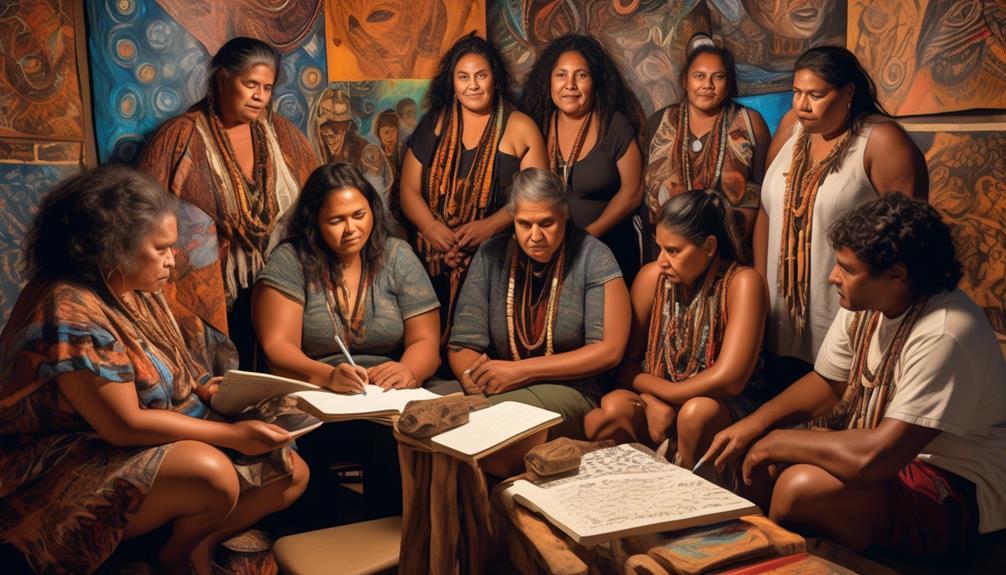
Collaborating with First Nations communities to revitalize and preserve indigenous languages requires co-design, authentic delivery, and cultural inclusivity as essential components.
We understand that successful language programs in schools necessitate co-designing with First Nations communities, and collaboration with traditional owners, educators, and the whole school community is vital in language revitalization programs.
As part of the First Nations Languages Education Program, developed in partnership with First Languages Australia, our aim is to teach and strengthen Aboriginal and Torres Strait Islander languages. By progressing Target 16 of Closing the Gap, we're committed to supporting a sustained increase in the number and strength of Aboriginal and Torres Strait Islander languages being spoken.
In our collaborative approach, we prioritize the involvement of community members, ensuring that their voices and perspectives shape the language preservation initiatives. Through our partnerships with regional committees and language centers, we strive to create inclusive and culturally sensitive language revival programs that honor the rich linguistic heritage of Indigenous communities.
Challenges and Opportunities in Language Preservation
In addressing the ongoing process of language preservation, our focus shifts to the multifaceted challenges and opportunities inherent in revitalizing and sustaining First Nations languages.
The preservation of Aboriginal and Torres Strait Islander languages faces numerous hurdles, including the loss of fluent speakers, limited resources, and the impact of historical policies that suppressed traditional languages. Moreover, the vast diversity of languages within Indigenous populations presents a logistical challenge in implementing comprehensive revival programs.
However, amidst these challenges lie opportunities for progress. The establishment of regional committees and language centers provides a platform for collaboration and resource-sharing, fostering a more unified approach to language preservation. Additionally, the recognition of language rights and the growing support for the revitalization of endangered languages signify a positive shift in societal attitudes.
Frequently Asked Questions
What Can We Do to Preserve Indigenous Languages?
To preserve indigenous languages, we need:
- Community involvement
- Cultural immersion
- Educational initiatives
- Technology integration
- Linguistic documentation
- Intergenerational transmission
- Oral storytelling
- Government support
- Language revitalization
- Indigenous collaborations
We believe in:
- Engaging the community in language preservation
- Integrating cultural practices into education
- Utilizing technology for language learning
- Documenting linguistic knowledge
We also seek:
- Government support
- Partnerships with indigenous communities to revitalize and preserve our languages.
Why Are the Efforts to Reclaim or Preserve Indigenous Languages Important?
Preserving indigenous languages is crucial for cultural identity, intergenerational knowledge, and linguistic diversity. It empowers indigenous communities, heals colonial impacts, and sustains language revitalization.
Language preservation is vital for honoring history, oral traditions, and promoting resilience. Through education and community engagement, revitalization efforts connect people to their heritage and foster healing.
These endeavors are important for preserving linguistic diversity and promoting a strong and vibrant indigenous culture.
What Are the Strategies for Preserving Languages?
Preserving languages involves language immersion, community involvement, and education programs.
It also includes cultural revitalization, oral tradition, and intergenerational transmission.
Strategies encompass linguistic documentation, technology integration, and policy development, all requiring funding support.
These efforts are crucial for preserving the rich heritage of indigenous languages.
How Is Canada Preserving Indigenous Languages?
We're preserving indigenous languages through government initiatives, community involvement, and education programs.
Cultural immersion, technological support, and linguistic research play crucial roles.
Inter generational transmission, language documentation, and indigenous leadership are integral to this effort.
Our aim is language revitalization, ensuring the sustained increase in the number and strength of Aboriginal and Torres Strait Islander languages being spoken.
This comprehensive approach supports the wellbeing of First Nations people and fosters appreciation for first languages and cultures.
Conclusion
In conclusion, we believe that our comprehensive approach to language preservation for Aboriginal and Torres Strait Islander languages is crucial for the future of Indigenous communities.
By working together and utilizing the resources available, we can ensure that our languages continue to thrive for generations to come.
It's like planting seeds in a digital garden, nurturing them with care and dedication, so that they may bloom and flourish in the digital landscape of the future.
